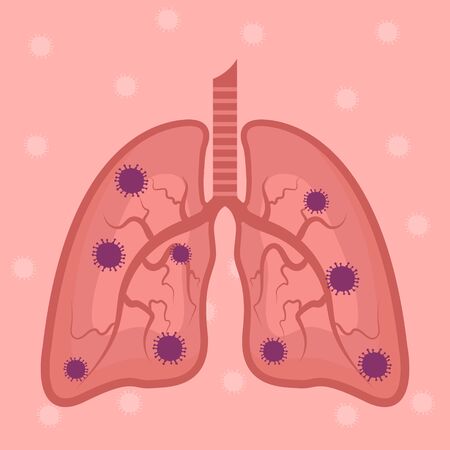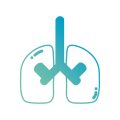Overview of Pulmonary Rehabilitation in the NHS
Pulmonary rehabilitation (PR) represents a cornerstone of respiratory care within the National Health Service (NHS) in the United Kingdom. Defined as a comprehensive, multidisciplinary intervention, PR is designed to improve the physical and psychological condition of people with chronic respiratory diseases and to promote long-term adherence to health-enhancing behaviours. The primary aims of pulmonary rehabilitation are to alleviate symptoms, enhance exercise capacity, and improve quality of life for patients suffering from conditions such as chronic obstructive pulmonary disease (COPD), asthma, and interstitial lung disease.
The Evolution of Pulmonary Rehabilitation in the NHS
The development of pulmonary rehabilitation within the NHS has been shaped by both clinical research and national policy initiatives. Historically, PR began to gain traction in the UK during the late 20th century, following robust evidence demonstrating its efficacy in reducing hospital admissions, minimising exacerbations, and facilitating self-management among patients with chronic lung conditions. Over time, the NHS has progressively embedded pulmonary rehabilitation into standard care pathways, recognising its cost-effectiveness and its role in reducing pressure on acute healthcare services.
Significance for Respiratory Health in the UK
In the context of public health challenges such as rising rates of COPD and an ageing population, pulmonary rehabilitation holds particular significance for respiratory health across Britain. The NHS approach emphasises equitable access to PR programmes as part of broader efforts to address health inequalities and improve outcomes for those living with long-term respiratory conditions. By prioritising early intervention and ongoing support through structured PR services, the NHS seeks to empower patients, reduce hospital dependency, and ultimately enhance community wellbeing.
2. Funding Mechanisms and Resource Allocation
Pulmonary rehabilitation programmes within the NHS are primarily funded through central government allocations to NHS England, which then distributes resources according to national health priorities and local population needs. These funding flows are guided by established policy frameworks such as the NHS Long Term Plan and NICE (National Institute for Health and Care Excellence) guidelines, both of which recognise pulmonary rehabilitation as a key intervention for respiratory diseases like COPD.
Overview of Funding Structure
The budgeting process involves several layers of decision-making:
| Level | Responsibility | Description |
|---|---|---|
| NHS England | Strategic Allocation | Sets overall budget and priorities for health services, including respiratory care. |
| Integrated Care Boards (ICBs) | Local Commissioning | Determine local spending based on population health needs and allocate funds to providers. |
| Service Providers (NHS Trusts, Community Teams) | Programme Delivery | Implement pulmonary rehabilitation services within allocated budgets. |
Policy Frameworks Guiding Funding Decisions
NICE guidance mandates that eligible patients with chronic respiratory conditions should be offered pulmonary rehabilitation. The NHS Long Term Plan further highlights the expansion of these services as a national priority, aiming to reduce hospital admissions and improve quality of life. These policies ensure that resource allocation is not only evidence-based but also directed towards population health outcomes.
Budgeting Challenges in the UK Context
The UK’s publicly funded healthcare system faces unique challenges in resource allocation. Funding for pulmonary rehabilitation must compete with other pressing priorities such as cancer care, mental health, and elective surgeries. Moreover, there is significant regional variation in service provision due to differing local needs and historic investment patterns. Austerity measures and rising demand for services have led to ongoing pressures on budgets, making it essential for commissioners to demonstrate cost-effectiveness when investing in pulmonary rehabilitation programmes.
In summary, while NHS policy frameworks strongly support pulmonary rehabilitation, actual funding levels and resource distribution are shaped by complex interactions between national priorities, local decision-makers, and the realities of managing finite public resources within the UK’s universal healthcare model.

3. Service Delivery Models
Within the NHS, pulmonary rehabilitation (PR) services are delivered through several distinct models, each tailored to address varying patient needs, local resources, and geographical contexts. Understanding these models is essential for appreciating how the NHS aims to provide equitable and effective care across the UK.
Hospital-Based Programmes
Hospital-based PR remains a cornerstone of service delivery, particularly in urban areas and larger towns where NHS Trusts can centralise expertise and resources. These programmes typically operate within respiratory outpatient departments or dedicated rehabilitation units, enabling close collaboration with multidisciplinary teams. The clinical environment allows for comprehensive assessment and swift response to complex cases, aligning with NICE guidelines on integrated care for chronic respiratory conditions. However, access may be limited by transport challenges or capacity constraints in densely populated regions.
Community-Based Models
To improve accessibility and engagement, many NHS providers have shifted towards community-based PR schemes. These are often hosted in local leisure centres, GP surgeries, or community halls, making them more accessible for patients living outside major urban hubs. This model supports personalised care closer to home and fosters ongoing peer support networks, which are recognised as best practice in long-term condition management. Regional CCGs (Clinical Commissioning Groups) frequently collaborate with local councils and voluntary organisations to deliver these programmes, reflecting the NHSs commitment to place-based care.
Digital and Remote Approaches
The COVID-19 pandemic accelerated the adoption of digital PR solutions across the UK. Virtual classes, tele-rehabilitation platforms, and app-based monitoring enable patients to participate from home—particularly valuable for those with mobility issues or residing in remote areas such as rural Scotland or coastal Wales. While digital inclusion is a challenge for some populations, these innovations align with NHS Long Term Plan ambitions to harness technology for broader service access and continuity of care.
Regional Variation and Equity of Access
Despite national frameworks like the BTS/BLF quality standards for PR, regional variation persists due to differences in funding allocations, workforce availability, and local health priorities. For example, metropolitan areas may offer more frequent hospital-based sessions, whereas rural regions often rely on hybrid or fully remote models. Efforts to standardise referral pathways and outcome measurement—such as through the National Asthma and COPD Audit Programme—seek to reduce unwarranted variation and promote best practice across all settings.
Best Practice Guidance
The NHS encourages all providers to benchmark their services against established guidelines from NICE and professional bodies like the British Thoracic Society. Continuous evaluation, patient feedback mechanisms, and cross-sector partnerships underpin ongoing improvements in PR delivery—ensuring that regardless of delivery model, patients receive evidence-based interventions tailored to their needs.
4. Referral Pathways and Access Criteria
Pulmonary rehabilitation (PR) within the NHS is governed by structured referral pathways and defined access criteria, ensuring that patients who stand to benefit most are identified and supported. Typically, referrals are initiated by primary care practitioners, respiratory specialists, or hospital-based clinicians following acute exacerbations of chronic respiratory conditions. The process seeks to streamline patient flow into PR services while maintaining high standards of clinical appropriateness.
Referral Mechanisms within the NHS
Referral to pulmonary rehabilitation can occur through several established channels:
| Referral Source | Common Scenario | Key Considerations |
|---|---|---|
| GP (General Practitioner) | Routine management of COPD or asthma | Based on spirometry results and symptom burden |
| Respiratory Specialist | Post-hospital discharge after acute exacerbation | Early intervention post-discharge is encouraged for better outcomes |
| Nurse-led Clinics | Community review clinics for stable patients | Integration with long-term condition reviews |
| Self-referral (in select areas) | Patients educated about PR may self-initiate contact in pilot sites | Dependent on local commissioning arrangements |
NHS Eligibility Standards for Pulmonary Rehabilitation
The NHS follows evidence-based eligibility criteria to ensure resources are directed where they will have the greatest impact. The primary qualifying condition is chronic obstructive pulmonary disease (COPD), though other chronic respiratory diseases such as bronchiectasis, interstitial lung disease, and stable asthma may also be considered. Key eligibility criteria typically include:
- A confirmed diagnosis of a chronic respiratory condition (usually via spirometry or relevant imaging)
- Functional limitation due to breathlessness (commonly MRC Dyspnoea Scale grade 2 or above)
- Stability of clinical condition (not in acute phase)
- No contraindications to exercise training, such as unstable cardiac disease or severe cognitive impairment
Efforts to Improve Equity and Timely Access
Inequities in access—often linked to socioeconomic status, geographic location, and health literacy—have prompted targeted interventions across NHS trusts. Strategies include:
- Digital Triage and Virtual PR Options: Expanding remote delivery models to reach rural populations and those unable to travel.
- Cultural Competency Initiatives: Providing materials in multiple languages and culturally tailored education sessions.
- Streamlined Post-Discharge Referrals: Embedding automatic referral prompts in hospital discharge protocols for eligible patients.
- Outreach and Community Partnerships: Working with local charities, social prescribers, and community health workers to raise awareness and facilitate engagement.
The Ongoing Challenge of Timeliness and Coverage
The NHS Long Term Plan underscores the ambition to increase PR participation rates among eligible individuals. Reducing waiting times remains a key performance indicator, with many trusts adopting rapid-access clinics following hospital admissions for acute respiratory events. Continuous audit and feedback mechanisms are used to monitor disparities in service uptake and inform further improvements in referral pathways and access standards.
5. Barriers to Uptake and Case Studies
Common Obstacles in Pulmonary Rehabilitation Participation
Despite the clear clinical benefits of pulmonary rehabilitation (PR), both patients and healthcare providers within the NHS face a range of barriers that can hinder uptake and completion. Key challenges include limited awareness among patients, misconceptions about PR’s relevance, difficulties with transport to local centres, and inflexible scheduling that does not accommodate work or caring responsibilities. Additionally, healthcare professionals sometimes lack sufficient time or resources to refer eligible patients, and there may be disparities in service provision across different regions of the UK.
Socioeconomic and Cultural Factors
Socioeconomic inequalities play a significant role in determining access to PR. For example, individuals living in more deprived areas often encounter additional obstacles such as unreliable public transport, financial constraints, or lower health literacy rates, all of which can reduce their ability or willingness to participate. Furthermore, language barriers and cultural differences may limit engagement among ethnic minority groups, who might not receive culturally tailored information about the benefits of rehabilitation.
Case Study: Overcoming Transport Challenges in Manchester
In Greater Manchester, one community-based PR programme recognised low attendance rates linked to transportation issues. By collaborating with local councils and voluntary sector organisations, the service introduced subsidised taxi vouchers and mobile PR units that travelled to community centres closer to patients’ homes. This practical solution resulted in a notable increase in programme completion rates among patients from deprived neighbourhoods.
Case Study: Addressing Awareness Gaps in Rural Wales
A rural health board in Wales identified that many eligible patients were unaware of PR services due to limited primary care outreach and communication barriers. The board piloted an initiative involving targeted GP training and patient education workshops delivered in local languages (Welsh and English). As a result, referral numbers increased significantly, demonstrating the value of tailored communication strategies within diverse communities.
Ongoing Challenges and Areas for Improvement
While these case studies highlight innovative solutions, persistent challenges remain. Waiting times for assessment and treatment can still be lengthy due to resource constraints. Digital PR options have been explored but are not universally accessible due to digital exclusion among some older adults or those without reliable internet access. Continued investment in staff training, infrastructure, and flexible service models is essential to ensure equitable access across all NHS regions.
6. Future Directions and Policy Initiatives
The landscape of pulmonary rehabilitation (PR) within the NHS is poised for significant transformation, driven by a combination of emerging trends, digital innovations, and forward-looking policy initiatives. As the burden of chronic respiratory diseases continues to rise in the UK, there is a growing recognition of the need to modernise PR services to ensure equitable access and improved patient outcomes across diverse populations.
Embracing Digital Innovations
One of the most notable developments in recent years has been the increasing integration of digital health solutions into PR delivery. Remote monitoring tools, virtual rehabilitation sessions, and mobile applications are now being piloted or implemented in several NHS trusts. These technologies allow patients to engage with PR programmes from their homes, reducing geographical barriers and improving adherence. Early evaluations suggest that digital PR can be as effective as traditional face-to-face models, particularly when supported by robust clinical oversight and tailored to individual needs.
NHS Policy Commitments
The NHS Long Term Plan underscores the importance of expanding access to evidence-based interventions like PR. Key policy initiatives include commitments to increase referral rates from primary care, standardise service quality through national accreditation schemes, and invest in workforce development. There is also an emphasis on reducing unwarranted variation in service provision between regions by promoting best practice models and fostering greater collaboration between acute hospitals, community providers, and local authorities.
Tackling Health Inequalities
A core focus moving forward is addressing health inequalities in PR uptake and completion. The NHS is actively exploring targeted outreach strategies for underserved groups, including those from socioeconomically deprived areas or ethnic minorities. Enhanced data collection and outcome tracking will help identify gaps in service provision and inform more responsive commissioning decisions at both local and national levels.
Looking Ahead
As PR continues to evolve within the NHS framework, ongoing investment in digital infrastructure, workforce training, and public awareness campaigns will be essential. Collaborative research projects are also underway to further refine virtual models of care and develop personalised rehabilitation pathways. Ultimately, these future directions aim to ensure that all eligible patients—regardless of location or background—can benefit from high-quality pulmonary rehabilitation, supporting better long-term health outcomes across the UK.

